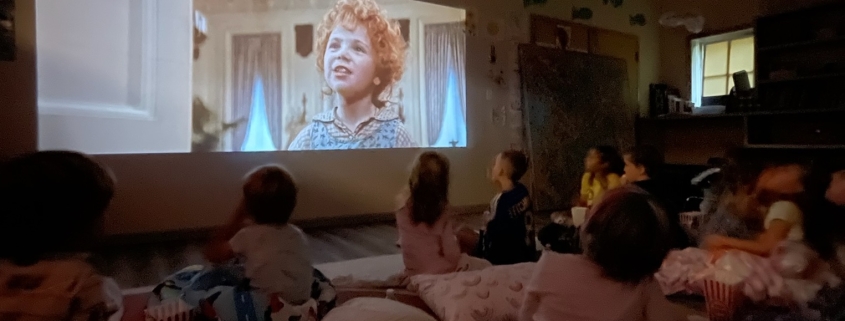What to Do if Your Child Is Obsessed with a TV Show
Every parent has lived through it: the theme song on repeat, the quotes at dinner, the insistence on watching just one more episode. When your child becomes obsessed with a TV show, it can be equal parts adorable and exhausting. But the good news—according to child psychologists and mental health professionals—is that “show obsessions” are normal, developmentally useful, and often temporary. With a little guidance, you can harness the interest while keeping screen time healthy.
Why Kids Get So Attached to a Show
- Predictability feels safe.
Young children especially thrive on repetition. According to a report in The Conversation, children “have a lot to learn about themselves and the world.”
With repeat viewings, the predictable storylines, familiar characters, and recurring themes immerse kids in a “make-believe world that provides comfort,” helping them process real world stressors.
Rewatching the same show can feel especially comforting during times of rapid development or transitions.
- Characters become “practice friends.”
From ages 4–12, children often model behavior after fictional characters through parasocial relationships — one-sided emotional connections that support social and emotional growth.
As researchers note, parasocial connections allow children to “simulate how they might feel and react in the situations in the stories from a position of safety,” fostering empathy, perspective-taking, and personal growth.
“These connections can lead to a variety of outcomes ranging from improving school readiness to enhancing psychological well-being” because they give children safe opportunities to practice social skills and self-regulation
- Identity building peaks in later childhood.
For children ages 9–12, a favorite TV show can become part of their identity—much like a beloved hobby or sports team.
Around age 11 (girls) or 12 (boys), frontal gray matter peaks, often showing up as greater self-awareness, experimenting with independence, and more complex moral reasoning.
The maturing prefrontal cortex improves planning, decision-making, and self-reflection, while synaptic pruning strengthens frequently used neural pathways.
Highly attuned to social and emotional cues, tweens often latch onto shows that reflect independence, belonging, or humor. Characters that mirror their experiences “help teenagers build their identity,” offering symbolic tools to project, reflect, and construct personal narratives.
Repeated viewing provides a predictable space to rehearse social interactions, reflect on choices, and explore values and identity through beloved characters.
When It’s Normal — And When to Look Closely
A strong interest in TV is usually not a problem if your child can:
- Pause or transition away from the show with reasonable support
- Engage in other activities (play, schoolwork, social time)
- Talk about the show without becoming distressed
- Follow reasonable screen-time limits
Remember, like all things, this too shall pass. A 2025 article in Communication Theory notes that “after an initial effect-sensitive period, media effects stabilize,” meaning the impact of repeated exposure is likely to level off rather than continue strengthening.
Kids tend to grow out of them as developmental needs shift, school demands increase, or new interests emerge. Most show phases burn out in weeks or months — especially if you’re offering structure and variety.
However, take a closer look if the obsession:
- Replaces sleep, meals, or social interaction
- Comes with personality change or distress and meltdowns when the show is unavailable
- Escalates during times of anxiety, bullying, or major family stress
- Includes content that is too mature or dysregulating
Mental health professionals note that intense interest in a TV show often spikes during periods of stress, boredom, or upheaval. As Associate Professor Michael Noetel explains, “We sometimes give children screens when they’re struggling, but doing so seems to make them struggle more.”
A comprehensive review of 132 longitudinal studies found that higher screen use can worsen social-emotional problems – like anxiety or depression – which then drives children back to screens as a coping mechanism.
Noetel and his co-researchers argue this creates a vicious cycle: while screens may feel like a safe emotional retreat, they can also interfere with learning, sleep, play, and face-to-face relationships – the very things that help kids build real resilience.
Strategies to Keep the Obsession Healthy
As Neuroscience News notes, “While repetition is beneficial, it’s important to ensure it doesn’t overshadow other vital activities.” Here are a few steps you can take to strike a balance.
- Build healthy limits without shaming the interest
Avoid dismissing or mocking the obsession. Instead try:
- “I love how creative Bluey makes you.”
- “You can tell Avatar really inspires you.”
- “Let’s save the next episode for tomorrow so we have plenty of time.”
Affirm the enthusiasm while guiding boundaries. Kids are far more cooperative when they feel respected.
- Set a predictable screen-time structure.
Kids cope better with limits when they’re clear and consistent. Developmental experts suggest:
- A daily screen-time window
- Special “show days” if needed (e.g., weekend mornings)
- A visual schedule for younger kids
Predictability prevents power struggles and helps kids mentally prepare for transitions. Simple rules might be “no TV before lunch,” “hour on, hour off,” or “no TV after 7pm.”
- Use the show as a jumping-off point for offline play.
Instead of fighting the obsession, channel it.
- Preschoolers: Act out scenes with toys, draw characters, build settings out of blocks
- Elementary-age: Encourage fan art, stories, Lego builds, pretend play, or themed activities
- Tweens: Try cooking a recipe from the show, making a parody, choreographing a dance, or creating an “inspired-by” craft
Building the bridge to the real world supports imagination, motor skills, and creativity—and helps the interest move beyond passive watching.
- Watch an episode together (sometimes)
Co-viewing helps you:
- Understand the storylines
- Spot themes your child might be relating to
- Model critical thinking (“Why do you think she did that?” “Is that something you’d try?”)
- Redirect inappropriate content
You don’t need to sit through every episode — just enough to stay plugged in.
- Notice what your child gets out of the show
A child psychologist’s favorite question is: What need is this show meeting?
- Comfort?
- Humor?
- A sense of mastery?
- Connection with peers?
- Distraction from stress?
Once you understand the “why,” it’s easier to offer alternatives that meet the same need—without endless episodes.
- Offer competing activities — not punishments
When a child is deep into a show, a vague “go play” rarely works. Instead offer easy “on-ramps”:
- Coloring pages or craft supplies
- Audiobooks
- Outdoor sports equipment or a hike
- Games or puzzles
- Playdates
- Independence-building chores
- Extracurricular workshops, camps, or drop-in classes
A well-timed alternative can break the binge cycle naturally and restore balance.
The Bottom Line
A TV show obsession is usually a sign that your child is curious, imaginative, and looking for connection—not that something is wrong. With a mix of structure, empathy, and creativity, you can support the interest while keeping screen habits balanced. And who knows? Their latest obsession might even spark a skill, passion, or hobby that lasts long after the show leaves your living room.


